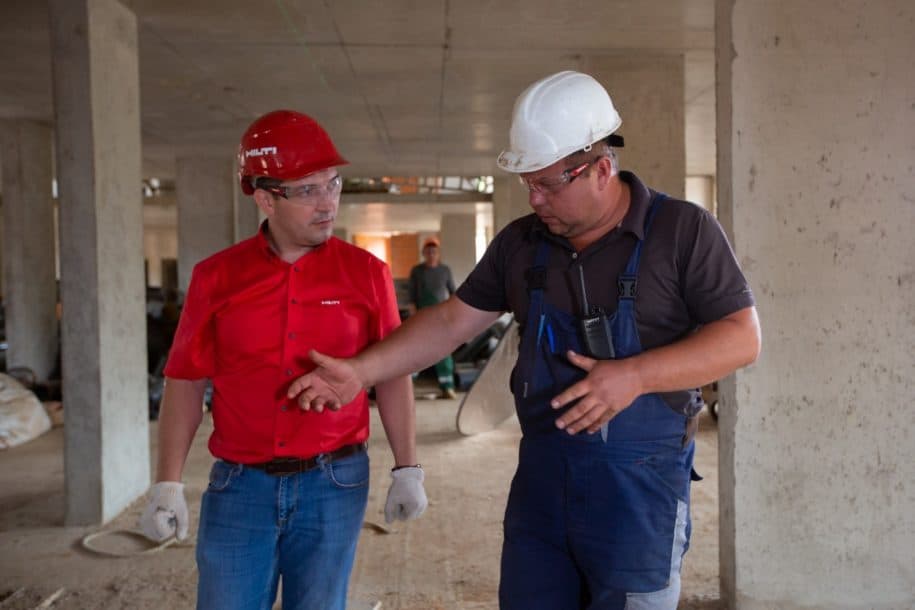“If you don’t believe in the messenger, you won’t believe the message.” –Kouzes & Posner
Much of my career and my writings have focused on building trust and productive partnerships between organizations’ workforce and leadership through personal and adult-to-adult interactions. Building such relationships requires soft skills and an ability to cope with challenges. Many professionals in management positions (and in safety) remain firmly planted in a command-and-control mindset that fails to incorporate worker knowledge and engagement. This wastes human and organizational potential, and frankly, needs to change.
The workforce will not take safety more seriously than the level that is demonstrated by management and supervisors.
Given the importance of management and supervision’s behaviors towards safety, a surprising number of companies focus nearly every safety resource on compliance and altering the behavior of workers. Awareness programs, cardinal rules, BBS programs, incentives, and informational posters are all designed to “fix” the worker. However, these programs have little or no effect on the behavior of management, though they are generally responsible for organizational safety. As a result, considerable, time, money, and safety resources are wasted on non-sustainable worker modification tactics.
Stop trying to “fix the problem;” lead by example.
Willingness to develop trust, respect, and empathy with those following is a hallmark of successful leaders. In the workplace, productive relationships are rarely achieved from behind a desk. Managers who desire more efficiency in their workplace need personal interactions with those who do the work. Appropriately connecting helps managers demonstrate an interest in the work and the individuals who get the work done.
Those in leadership positions can be terrible listeners and protective over their authority. These characteristics are inherent to bad leadership and are fatal obstacles to leader/worker relationships. Effective relationship building requires humility, empathy, and recognition. Affirming that those closest to the work will understand the work, its problems, and potential hazards better than anyone is a first step in displaying humility in the workplace. Leaders willing to listen to and learn from their workers can create sustainable relationships and acquire valuable knowledge and insight into the work that ultimately reflects on them.
Many in the safety profession have come to recognize the value that positive leader/worker interactions add to safety programs. The benefits go beyond safety, extending into every facet of the organization (e.g., production, quality, worker retention, etc.). However, in traditional top-down management culture, convincing management of the many advantages of mutual trust relationships can be an uphill battle. Regardless, increasing respectful working relationships and worker engagement is a hill worth climbing. Studies show that well-conducted leader/worker interactions yield positive results in the emotional, behavioral, and social status of employees, translating into improved work performance (Babcock-Roberson & Strickland, 2010).
Meaningful relationships are not established with memos, speeches, or pizza parties. If the goal is adult-to-adult conversations, activities such as joint participation in problem-solving teams, management walkarounds, and informal one-on-one conversations create approachability. The goal is to learn from and personally engage with the workers. Safety as a partnership (as opposed to safety as a rule) cannot be achieved from inside an office.
Let’s get back to the basics.
There are entire books (e.g., The Relationship Factor in Safety Leadership by Rosa Carrillo) on how to develop positive leader/worker relationships. Here are a few of the essential “dos:”
- Just Do It: The influential safety consultant, Dan Petersen, was fond of relating how eager many of his clients were to pay large sums for him to tell them what their employees were thinking. To Petersen, this activity was both profitable and sadly ironic. Relationship building requires person-to-person connections that are not achievable via speeches, memos, incentives, or assignments to contractors.
- Listen: Forget coaching and preaching, especially to those who know the work first-hand. Though it may be a rare skill and will not come naturally to many, it is much more productive to actively listen. Though it requires training and practice to master, the payback is considerable. This demonstration of respect to your workers establishes that they and their knowledge are valuable to the organization.
- Display Integrity: Do what you say you will without backpedaling. Failing to follow up on employee input is the number one killer of the trust that is so vital to sustain hard-won relationships.
Safety professionals can be an example to management by fostering their own productive work relationships. Additionally, this will help those planning safety programs to see the gaps between work performed and work idealized. This knowledge is fundamental to implementing sustainable changes for improvement. Finally, having already done so, safety leaders can then convince managers of the value of leader/worker relationships and help them craft appropriate training for that transition. Patience and persistence make professional partnerships perfect.
Author Bio

Mr. Loud’s over 40 years of safety experience includes 15 years with the Tennessee Valley Authority (TVA) where he served as the supervisor of Safety and Loss Control for a large commercial nuclear facility and later as manager of the corporate nuclear safety oversight body for all three of TVA’s nuclear sites. At Los Alamos National Laboratory he headed the independent assessment organization responsible for safety, health, environmental protection, and security oversight of all laboratory operations.
Mr. Loud is a regular presenter at national and international safety conferences. He is the author of numerous papers and articles. Mr. Loud is a Certified Safety Professional (CSP), and a retired Certified Hazardous Materials Manager (CHMM). He holds a BBA from the University of Memphis, an MS in Environmental Science from the University of Oklahoma and an MPH in Occupational Health and Safety from the University of Tennessee.
References:
Carillo, Rosa. (2020). The Relationship Factor in Safety Leadership (1st ed.). New York, NY: Routledge.
Kouzes, J. M., & Posner, B. Z. (2012). The Leadership Challenge (5th ed.). San Francisco, CA: Wiley.
Meredith Elaine Babcock-Roberson & Oriel J. Strickland (2010) The Relationship Between Charismatic Leadership, Work Engagement, and Organizational Citizenship Behaviors, The Journal of Psychology, 144:3, 313-326, DOI: 10.1080/00223981003648336



